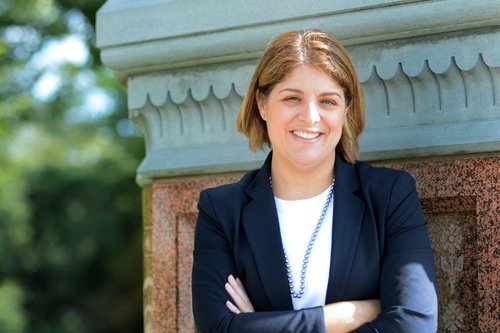Wrapping Up the Highs and Lows of Urban Public Health in 2018
December 2018
By Chrissie Juliano, Director, Big Cities Health Coalition

As 2018 winds down, I am celebrating my four year anniversary with the Big Cities Health Coalition, which has been a leader in the urban public health field for 16 years. While our membership, staffing, location, and infrastructure have changed over the years, our mission, vision, and goals remain the same: to protect health of those who live in America’s big cities for present and future generations.
This year, as in years past, our members’ work made me proud each day to work on their behalf from my office here in DC. To see some highlights of all they accomplished, check out some of the most read blogs authored by our member departments:
- Ten lessons we learned about how to deploy teams into post-hurricane settings New York Department of Health and Mental Hygiene
- Supporting older adults in Houston: ramps, rails and toilets Houston Health Department
- Making public health visible Baltimore City Health Department
Next year, we look forward to seizing the opportunities that will arise in the new year, with a new Congress and a fresh crop of coalition leadership.
As in years past, health departments in jurisdictions large and small, as well as at the state and federal levels, responded to a host of natural disasters, such as the fires in California; disease outbreaks, such as Hepatitis A, across the country, as well as new diseases such as AFM; and dealt with more tragedy in their communities due to two of the biggest challenges of our time – addiction and violence.
Even as policy and practice advanced in local communities across the country, we saw little at the federal level to really move the needle on violence and opioids. While localities work with scarce resources, we need more support to help those whose job it is to track and detect disease. We released a report this year showing that health departments need a 40% increase in epidemiologists overall, or an additional 434 epidemiologists, to fully meet today’s challenges. Finally, we also saw dramatic increases in sexually transmitted diseases in this year, a problem many thought was under control.
At the same, 2018 also brought unexpected victories, with increases in funding for the Centers for Disease Control and Prevention. Congress also showed a real understanding of the crucial role of local health departments in the opioids fight, and implemented language to insure resources are better able to flow into communities on the front lines. The courts also came to the defense of sound, science-based policy, by rejecting rollbacks to the Teen Pregnancy Prevention Program, with victories in Baltimore and Seattle.
Our members were also pleasantly surprised when FDA announced that they plan to further restrict flavors in not just e-cigarettes, but also address menthol in traditional cigarettes, a regulation our members have supported for years. We also saw progress in San Francisco, with their passage of the country’s strongest flavor restrictions. More and more this year, officials from the highest levels said with one voice that we must protect our youth from nicotine addiction – whether it was in an op-ed from the Chicago Health Commissioner on Big Tobacco targeting youth– or even the Surgeon General releasing a strong advisory on e-cigarettes. This is a fight our member cities have been fighting for a long time and will continue to do so moving forward.
When we look at the opioids epidemic, a challenge our cities have been raising the alarm with for years – long before the whole country was focused on it – we saw steps forward and back. New federal funding aims to improve the response to the epidemic, primarily with dollars to address addiction treatment, but it’s still too hard for localities to get access to affordable naloxone, the life-saving overdose reversal drug. Our cities are working to do so in new and creative ways, but despite influxes of federal dollars, there is still not a coordinated prevention plan to address deep root causes, such as a host of social determinants of health, like education and housing.
At the federal level, we also had to spend precious time and resources to combat policy decisions that will undoubtedly weaken communities and make people less healthy, such as the proposed changes to the public charge rule. This new rule puts essential food and health benefits at risk for immigrant families. The coalition collectively shared its opinion with the Department of Homeland Security loud and clear – we should not hold immigrant families hostage due to their need for important social and economic supports. Many of our cities shared this view publicly as well.
In 2018, the health officials in our coalition rose to some very real challenges and celebrated hard fought victories that were a long time in the making. Navigating the complexities of this year meant that the partnership and collegiality between Big City Health Coalitions members – who protect the health of more than 55 million Americans – proved more essential than ever before. I am hopeful for 2019, with fresh leaders in Congress and a recognition among professional staff at all levels of government that even though the public health challenges are hard, that we are all in this together, and able to make change one policy and one city at time.